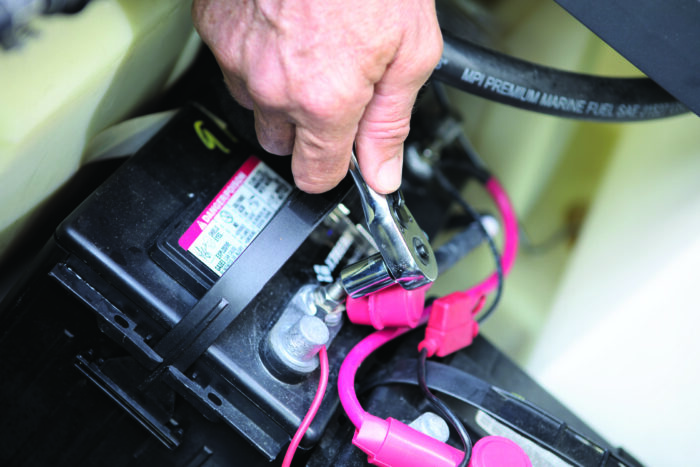2010 Yamaha 90hp 4 Stroke Starter Continuity




Yamaha recommends service intervals based on "typical" use that includes operating at varied speeds, sufficient time for the engine warm up and cool down, medium to light and average cruising speed near 3000 to 4000 rpm range. If your normal operating conditions are different, more frequent services should be considered, especially engine oil and gear oil. Examples might include: extended wide open throttle use or long periods of idling or trolling, carrying heavy loads and frequent starting and stopping or shifting. Changing fuel formulations could require more frequent fuel filter changes and fuel system maintenance.
Initial 20 Hour (or 3 Months) Service:
|
|
100 Hour (or 1 Year Service):
|
|
300 Hour (or 3 Years) Service:
The same inspections and work will be completed as your 100 hour service, plus:
- Inspect and Replace as Necessary –
- Diaphragm Style Fuel Pumps
- REPLACE the complete water pump. This includes the plastic housing.
- REPLACE spark plugs.
500 Hour (or 5 Years) Service:
The same inspections and work will be completed as your 100 hour service, plus:
- REPLACE the VST (Vapor Separator Tank) filters and tank gasket, as well as any filters in line with the tank. These filters include the "F-Shaped" filters.
- Inspect and Clean Oil Control Valves and Filter.
- Inspect and Adjust the Valve Clearance.
1000 Hour Service:
The same inspections and work will be completed as your 100 and 500 hour services, plus:
- Inspect and replace as necessary the exhaust guide and manifold.
- Replace the timing belts
- Timing belt tensioners should be inspected on all models and replaced on interference engines like the F150, F200 4-cylinder, V6 and V8 models. The older 3.3L F200 and F225 are non interference engines, so if the timing belt or tensioner failed, the engine would not run, but not cause any internal damage. It is still recommended to replace the tensioner on these models for overall reliability.
A 100 Hour Service Kit makes ordering what you need easy, and is can be used for the 20 Hour service as well.
There are several inexpensive service tools that will help you complete your work quickly and efficiently.
- A gearlube pump is needed for pumping lube into the lower unit. Yamaha has a quart sized pump and gallon sized pump, as well as a 5 Gallon pail pump.
- These inexpensive oil filter cap wrenches not only assist in removing the oil filter, but also protect the (costly) sensor located right behind the oil filter on some models.
- A MityVac can be used to pump the oil out of your engine rather than draining. Adapter hose accessories can make this job faster and more efficient . Check out how to use them here.
- The fuel filter cup on many larger motors (that house this filter specifically) can be difficult to remove. This tool helps you to get a grip on the cup and avoid destroying it in the process.
- An oil filter drain funnel allows cleaner engine oil draining on motors with a rear facing oil filter.
Of course you want your engine to look as good as it runs. Yamaha provides outboard owners a plethora of cleaning and engine care agents like detailing Yamalube Spray Polish, Silicone Protectant and Lubcricant spray, and Battery Cleaner. And don't forget Ring Free on every fuel fill up.
Download and print Yamaha's Four Stroke Maintenance Schedule.
Source: https://blog.simyamaha.com/yamaha-four-stroke-maintenance-schedule/
0 Response to "2010 Yamaha 90hp 4 Stroke Starter Continuity"
Post a Comment